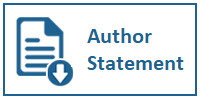MEASURING ORGANIZATIONAL RESILIENCE: A CASE STUDY IN DIGITAL DISRUPTION
DOI:
https://doi.org/10.31937/manajemen.v15i2.3354Abstract
Abstract - Organizational resilience is an organization's ability to anticipate and respond to disruptions. The higher the disruption pressure, the higher the organizational resilience required. This research explains how to measure the level of resilience and identify aspects of organizational resilience capabilities that need to be improved. In this way, organizations can increase resilience more precisely. The first step is to build a measuring instrument from 5 aspects of resilience capabilities, namely physical, mental, emotional, spiritual and intelligence resilience and 1 additional aspect, namely resilience knowledge. The second step is to carry out measurements using the resilience-measuring instrument. Measurements were carried out through a survey with a purposive sampling approach to leaders in 3 organizational groups facing digital disruption, namely management consultants, corporate universities, and universities. The third step is to present the measurement results that are grouped into 4 levels for each aspect, namely less resilient, moderately resilient, above average resilient, and high resilient. The measurement results show that the majority of leaders have a level of resilience above average, although only 50% of leaders have sufficient knowledge about resilience. This condition occurs because the organizational culture, which is in line with the aspects of resilience capabilities, has been well internalized. The measuring instrument constructed, the method of measurement, and the presentation of resilience measurement results in this research are a novelty to science. Meanwhile, the measurement results will be input for the respondent organization in increasing its resilience.
Keyword: Culture Resilience; Digital Disruption; Leadership; Organizational Resilience
Downloads
Downloads
Published
How to Cite
Issue
Section
License
Authors retain copyright and grant the journal right of first publication with the work simultaneously licensed under a Creative Commons Attribution-ShareAlike International License (CC-BY-SA 4.0) that allows others to share the work with an acknowledgement of the work's authorship and initial publication in this journal.
Authors are able to enter into separate, additional contractual arrangements for the non-exclusive distribution of the journal's published version of the work (e.g., post it to an institutional repository or publish it in a book), with an acknowledgement of its initial publication in this journal.















